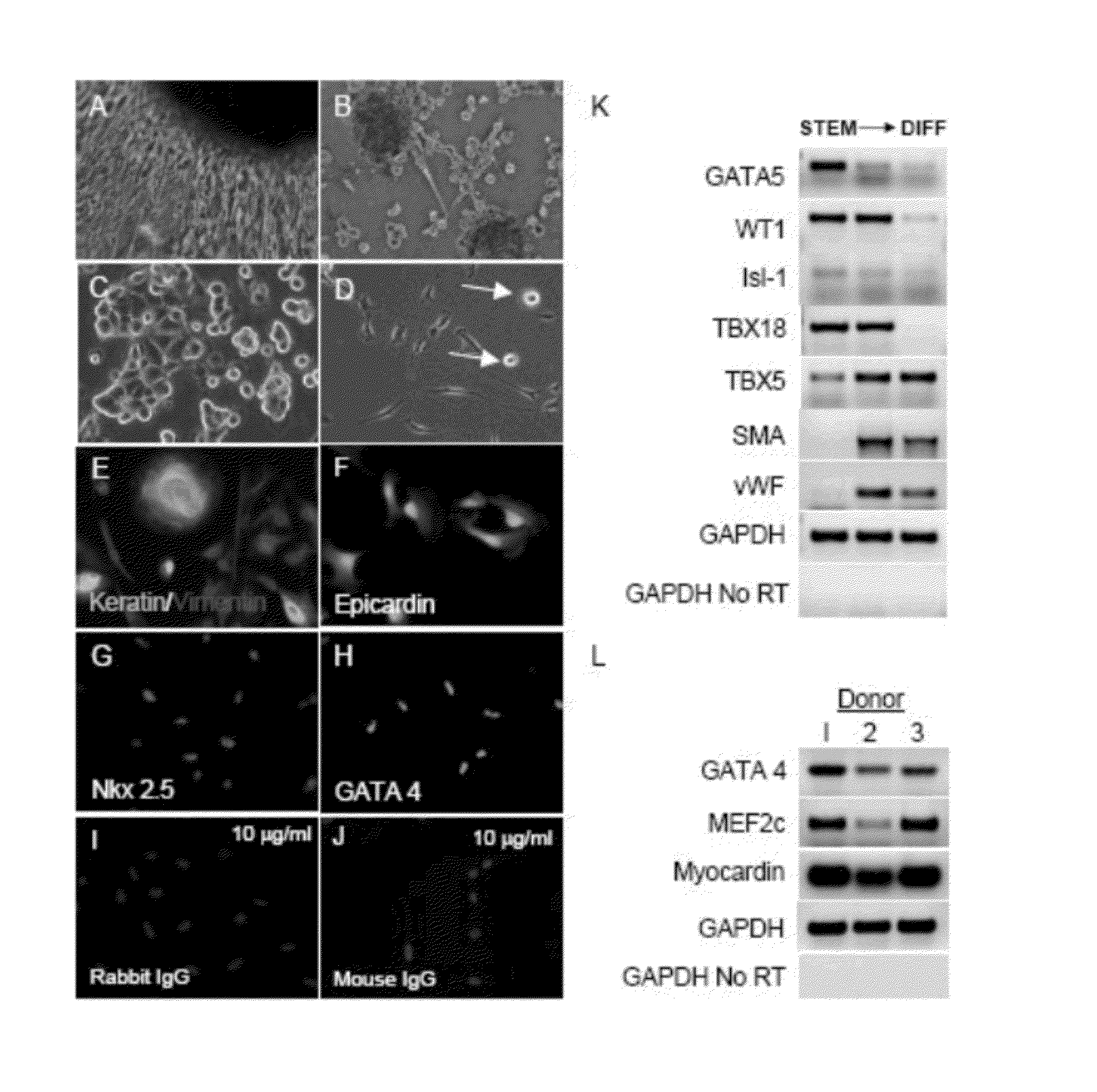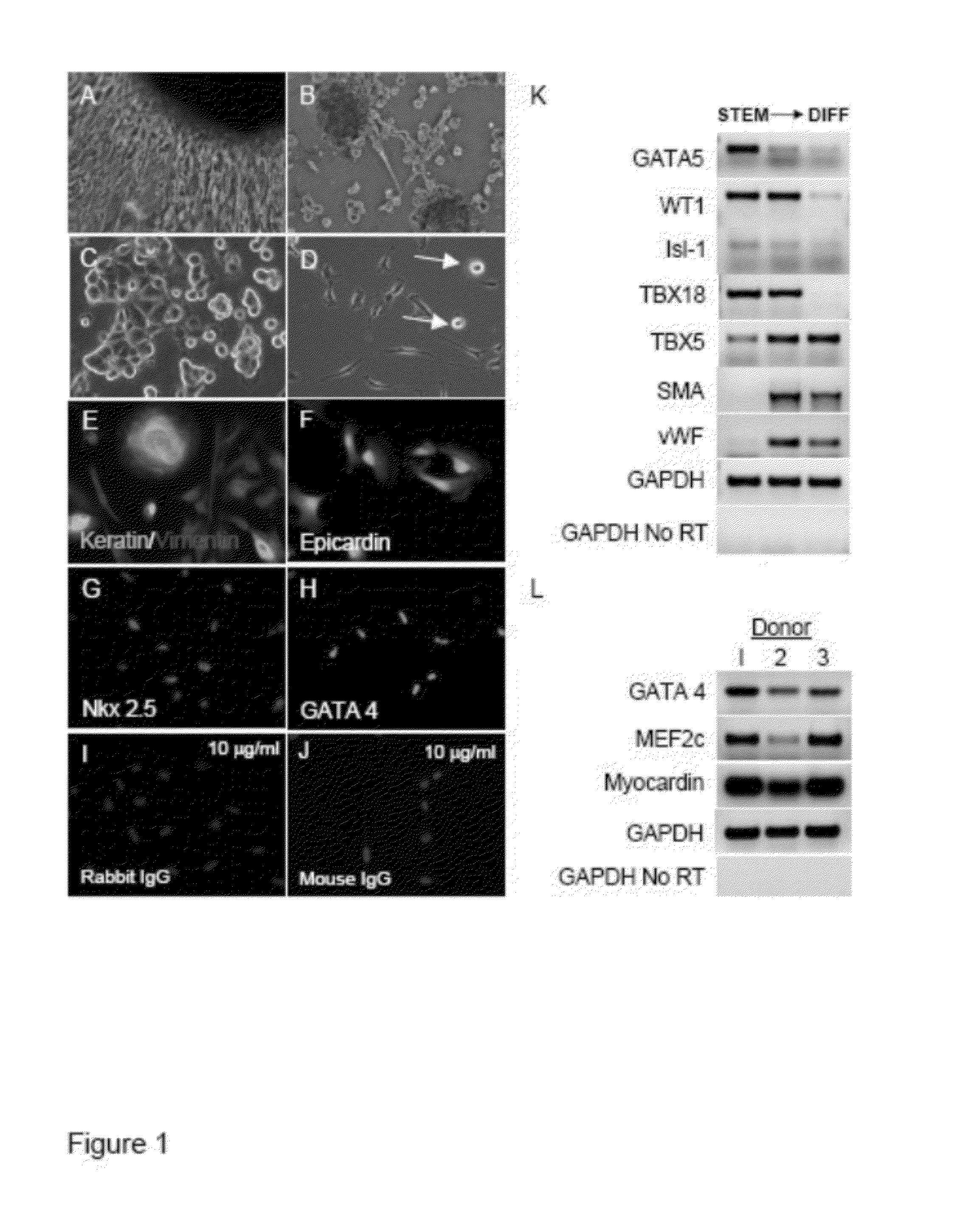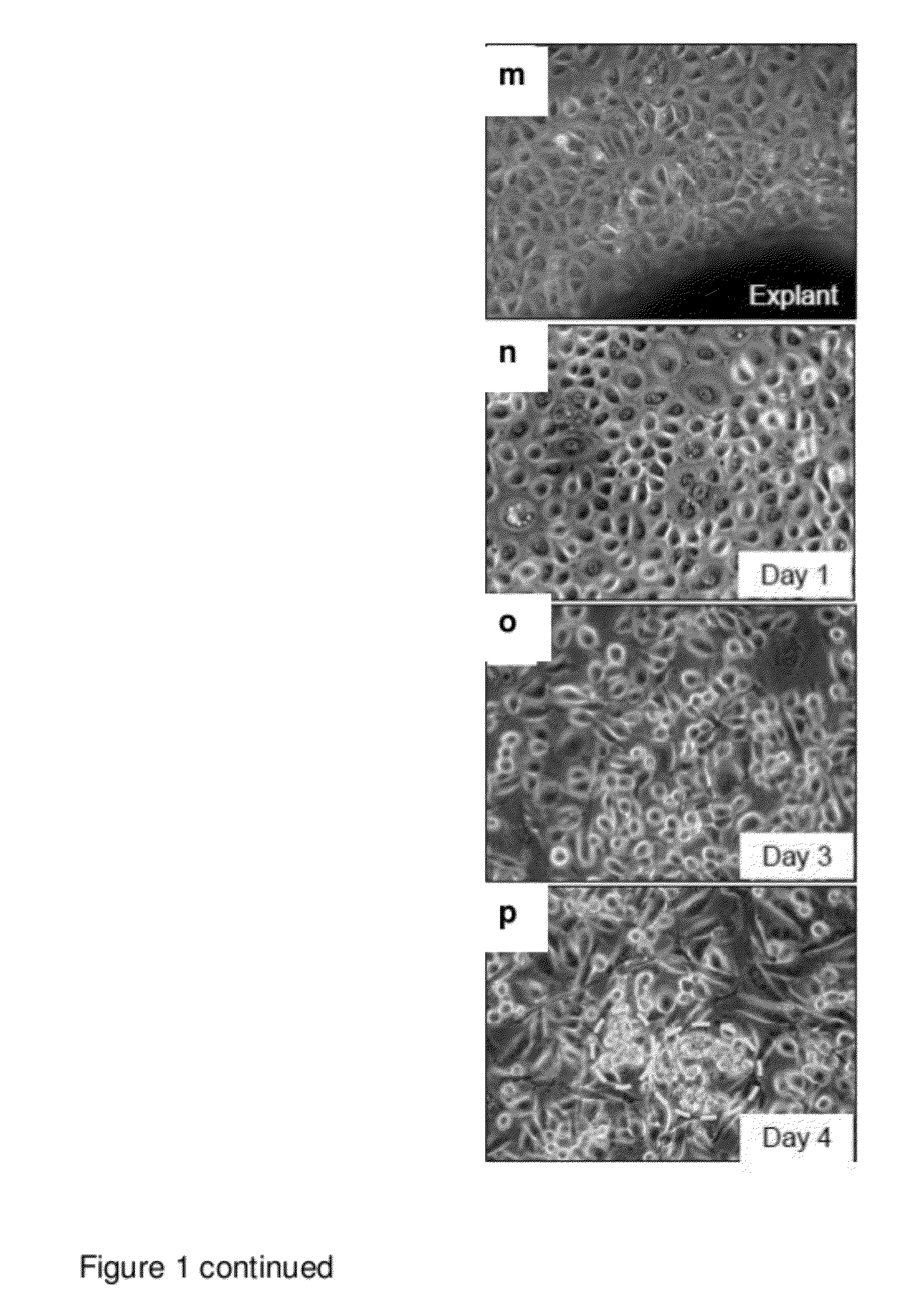Compositions and methods for cardiac tissue repair
a technology of cardiac tissue and compositions, applied in the field of compositions and methods for cardiac tissue repair, can solve the problems of increasing the death rate of patients, increasing the risk of myocardial infarction, and increasing so as to reduce the risk of cardiac infarction, and increase the effect of cardiac function
- Summary
- Abstract
- Description
- Claims
- Application Information
AI Technical Summary
Benefits of technology
Problems solved by technology
Method used
Image
Examples
example 1
Isolated Cardiac Progenitor Cells are Capable of Epithelial to Mesenchymal Transformation when Expanded in Conditioned Media
[0142]Adult human atrial stem / progenitor cells were isolated from right atrial biopsies. The right atrial appendage, commonly removed to install a cardiopulmonary pump during bypass surgery, provided ample material to isolate atrial stem / progenitor cells from 11 out of 12 donors. Adult human atrial stem / progenitor cells were successfully isolated from 12 out of 13 donors (Table 1).
TABLE 1Patient Data for Epicardial Progenitor Cell Isolations.SexAgeHTNDMCADMRASLVEFM47+++−−0.45M59+−+−−NIM57−−+−−NIM52−−−+−NIM57−−+−−NIF53+−+−−NIM80+−−−+NIF72+−−+−0.45M53+++−−NIM78−−+−−NIF72+−+−−NIF60+−+−−NIAbbreviations: HTN, hypertension; DM, diabetes mellitus; CAD, coronary artery disease; MR, mitral regurgitation; AS, aortic stenosis; LVEF, left ventricular ejection fraction.
[0143]Right atrial appendages were obtained from consenting cardiac bypass patients according to an Instit...
example 2
Conditioned Media Produced from Epicardial Progenitor Cells Preserved Cardiac Function after Myocardial Infarction
[0150]In cardiac development epicardial cells provide supportive and multifaceted roles. To determine whether agents present in conditioned media secreted by expanded epicardial precursor cells could provide cardioprotection or promote cardiac regeneration after myocardial infarction, a mouse model of myocardial infarction (MI) was used. Due to the human origin of the epicardial progenitor cells, immunodeficient (NOD / SCID) mice were used for treatment with CdM.
[0151]To prepare conditioned media from human atrial progenitor cells, atrial progenitor cells cultured for 3 passages were grown in Claycomb expansion medium on 150 cm2 dishes (Nunc). When the cells reached 70-90% confluence, the plates were washed twice with PBS and serum-free alpha minimal essential media (MEM) was placed on the cells (20 mls per plate). After 48 hours of incubation, the conditioned media was co...
example 3
Conditioned Media from the Human Epicardial Progenitor Cells Contains Growth Factors that Reduce Cardiac Necrosis Following Myocardial Infarction
[0156]To examine the timing and nature of cardioprotection provided by conditioned media from the human epicardial progenitor cells (EPI CdM), groups of immunocompetent mice were subjected to the 4 hour ischemia / reperfusion myocardial infarction (MI) model, treated with EPI CdM at the time of reperfusion, and euthanized after 24 hours to determine the numbers of cardiac cells undergoing apoptosis or necrosis. Similar to the results reported above, immunohistochemical assays specific for apoptotic cells (single-stranded DNA, ssDNA) minimal numbers of apoptotic cells were observed in either control hearts or those treated with EPI CdM at 24 hours after ischemia and reperfusion (FIGS. 12A-12G). Because one apoptotic cell was detected (ssDNA-positive) or less on multiple heart sections from control and EPI CdM-treated animals, apoptosis was not...
PUM
| Property | Measurement | Unit |
|---|---|---|
| time | aaaaa | aaaaa |
| angle | aaaaa | aaaaa |
| thickness | aaaaa | aaaaa |
Abstract
Description
Claims
Application Information
 Login to View More
Login to View More - R&D
- Intellectual Property
- Life Sciences
- Materials
- Tech Scout
- Unparalleled Data Quality
- Higher Quality Content
- 60% Fewer Hallucinations
Browse by: Latest US Patents, China's latest patents, Technical Efficacy Thesaurus, Application Domain, Technology Topic, Popular Technical Reports.
© 2025 PatSnap. All rights reserved.Legal|Privacy policy|Modern Slavery Act Transparency Statement|Sitemap|About US| Contact US: help@patsnap.com



